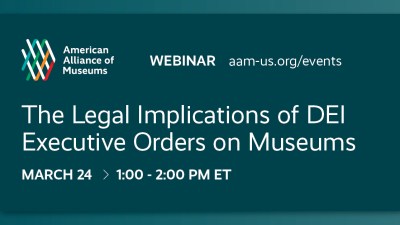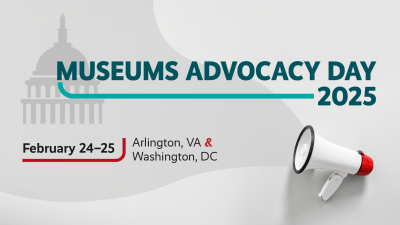
Slate magazine recently launched “Slate 90,” a critical look at tax-exempt organizations as represented by the 10 largest nonprofits in nine nonprofit sectors. Museums on Slate’s target list include the Smithsonian Institution, the Metropolitan Museum of Art, the Museum of Modern Art, the American Museum of Natural History, the National Gallery of Art, and the Museum of Fine Arts, Houston. I’m adding this to my file of “weak signals*” of changing attitudes toward the nonprofit sector in the US. And I’m bringing it to your attention because it suggests actions we as a field may collectively take to ensure that museums continue to benefit from tax-exempt status.
The Slate project is only the latest in a series of stories that document changing attitudes towards nonprofits in general and museums in particular. A few years ago, Senator Orin Hatch (R-Utah and Chair of the Senate Finance Committee), launched an extended investigation into selected private museums (broadly speaking, museums founded, funded, and to some extent controlled by wealthy art collectors). Questioning whether these organizations actually operate in the public interest, Senator Hatch flagged 502(c)3 status as an “area of our tax code ripe for exploitation.” While his inquiry concluded in 2016, the questions he raised aren’t going away. Just last month Crain’s New York drew attention to The Solow Art and Architecture Foundation, a small museum displaying the collection of billionaire real estate developer Sheldon Solow. Noting that the lack of regular public open hours, Crain’s basically accused Solow of running the museum as a tax avoidance scheme, and took a side swipe at other private museums in the process.
And now Slate 90. It’s hard for me to wrap my head around the hostility the project’s writers have towards our sector. The authors introduce their investigation by noting that “the nonprofit-industrial complex has metastasized in recent decades.” (Really—nonprofits as a cancer on the American body politic?) While my colleagues and I at the Alliance proudly document the economic impact of museums as a benefit to their communities, Slate asks, “How much economic activity has been maneuvered into tax-exempt nirvana?”
It’s tempting to write off Slate’s initiative as snarky, attention-grabbing journalism. But a) Slate is a mainstream publication with millions of readers, and b) they make some excellent points. For example, they make a credible case that the international charity Food for the Poor is a scheme for providing huge tax write-offs to US pharmaceutical companies. (Read their arguments and decide for yourself.) There’s a real risk that the public, reading stories like those cited above from Crain’s and Slate, will come to see tax-exempt status as a mechanism for the wealthy and powerful to evade taxes. (Slate 90 makes that case pretty explicitly.)
Skip over related stories to continue reading articleNow, I’m not saying that (many) people don’t love museums. The Alliance’s recent public opinion polling, conducted in partnership with Wilkening Consulting, documented that 86% of Americans consistently support the value of museums. Research conducted by Reach Advisors’ Museums R+D program shows that museums are considered the most trustworthy source of information in America, rated higher than local papers, nonprofits researchers, the U.S. government, or academic researchers.
But museums constitute less than 2% of the 1.5 million or so nonprofit institutions in the US. Public opinion towards tax-exempt organizations as a class is probably shaped most strongly by the perceived failings of big nonprofit players like Food for the Poor, or the Red Cross (which is also on Slate 90’s list). And individual museums do get critical attention from the press, whether for legal or perceived ethical transgressions of individuals or the governing authority. It’s clear that for a variety of influencers, from Senator Hatch to the writers at Slate, the general reputation of museums, with regard to value and trust, isn’t enough to exempt our sector from scrutiny about return on public investments.
As a futurist, I don’t believe in spending a lot of time and emotional energy worrying about potentially cataclysmic events we can’t prepare for. Yes there is a measurable risk of life on Earth being wiped out by a meteor but really, what can the museum sector do about that? I bring these depressing articles to your attention because we can do something about how the public views the value of tax-exempt organizations.
- For example, we can:
Practice radical transparency around our budgets by being open about where our money comes from, where it is spent. This goes beyond making IRS 990 forms public (they’re are publicly available on GuideStar anyway). How many museum staff, much less members of the public, can make sense of these statements? Museums can translate those numbers into an accurate, compelling story about the impact of their exhibits, education, programming, research, and collections care. - Broaden our thinking about the good we produce for society, and measure this, as well. As Colleen Dilenschneider points out, “not everyone wakes up wanting to visit a cultural organization,” but even people who rarely set foot in a museum may appreciate the contributions museums make to society, whether that’s improving health, contributing to happiness and wellbeing, addressing food insecurity, playing a critical role in the next era of P-12 education, or helping in the hard work of truth and reconciliation. This is particularly effective when museums band together around shared goals, e.g. the International Coalition of Sites of Conscience (truth and reconciliation), #WeAreStillIn (combating climate change), or OfByForAll (the initiative recently launched by Nina Simon and Santa Cruz MAH to help civic and cultural organizations grow of, by, and for their communities).
- Hold our staff, our board members, and our donors to the standard of Caesar’s wife—behaving in a way that puts them above suspicion with regard to motives and interests.
In the long term, if the public loses faith in the value nonprofits provide in return for tax-exempt status, the effects could be the financial equivalent of a meteor strike. (Cue mental image of dinosaurs/extinction.) But we can see this potential calamity coming, and we can take action to head it off. Because museums can change the world for the better, and as we do so, we show how we repay society ten-fold for the support the public provides.
*In futures studies parlance, a weak signal is an early indicator of an emerging trend that could have a major impact on the future.









Good article. We should also consider a self-governance body that can separate from the body of true museums and tax shelters. There will obviously be those that would still cry foul, but any effort to show transparency and make recommendations as a group of who is meeting the goals of non-profits that make a change would be helpful in telling our story.
Very thoughtful. Thanks Elizabeth.